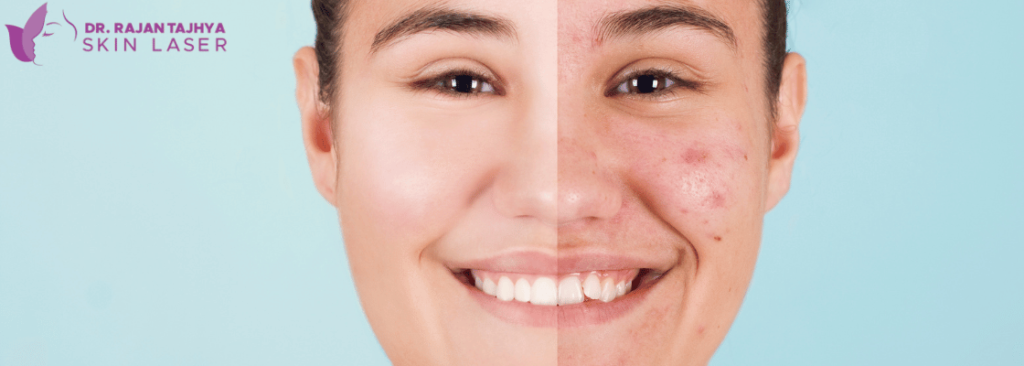
In Nepal, we often know acne as pimples. Acne is formed when the hair pores on the skin become plugged with oil and dead skin cells. This is the perfect place for bacteria to grow and create red bumps and pus-filled red bumps known as acne.
Acne can sometimes leave long-lasting marks called acne scars.
Scars that occur after acne is acne scar, which can range from mild hyperpigmented dark marks to deep ugly scars.
Are all acne scars the same?
All acne scars are not the same. Each type responds to treatment procedures differently.
This is why it is important to know their types and know what kind of scar you have. But most people always have mixed types of scar.
a) Raised scar
This type of scar is also called hypertrophic scars.
Unlike other kinds of acne scars that are depressed, raised hypertrophic scars are thick, lumpy formations that are raised than the normal skin surface.
Raised scars are seen more in the chest and back than on the face. They are formed by the over-production of collagen during acne healing.
b) Depressed scar
They are also called atrophic scars. They are relatively flat, thin scars. Depressed scars look sunken below the normal skin, hence creating an uneven skin surface.
Depressed scars are formed when enough collagen is not formed during acne healing.
These are the types of depressed scars:
Boxcar
Boxcar refers to scars with broad depressions and sharply defined edges. They are generally deep and U-shaped. However, the shallower (less deep) they are, the better they respond to acne scar removal treatments.
Ice pick
These are deep, narrow pitted scars. Ice picks are generally V-shaped and are the hardest to deal with because they can go deeper into the skin during formation.
Rolling
These are also depressed scars with sloping edges. They are rolling with rounded edges and irregular appearance.
Notice the small depressions caused on his cheek because of acne.
Treatment of acne during the initial days of acne eruption heals without any treatment and leaves no scar. In some cases, acne occurs time and again and when not treated well leaves a scar. Timely treatment of acne is necessary to prevent acne scars.
When the acne gets old and reoccurs frequently chances of causing scars also increase. Besides these environmental factors, psychological factors, hormonal factors, and other comorbid conditions also play a vital role.
There are numerous treatment procedures available to minimize/remove acne scars.
However, you need to understand that the basic working principle is the same for all the procedures.
Basically, all kinds of treatment focus on stimulating the production of collagen and/or elastin. Collagen and elastin are two substances that will work against acne scars. They will work on the tissue that is deformed by the acne scars and will make them almost like normal human skin.
This process is called Collagen Induction Therapy.
At Dr.Rajan Tajhya’s skin laser clinic, we have the following treatments for you:
a) PRP for acne scar treatment
b) Microneedling with disposable needles
c) Fillers
d) TCA Cross Method
e) Subcision
f) Surgery
g) Microneedling Radiofrequency
h) Co2 fractional lasers
Dr. Rajan Babu Tajhya is a board-certified dermatologist and laser specialist. He completed his M.B.B.S. from Kathmandu University and Specialized Dermatology from Tribhuwan University in the year 2010 A.D.
We offer free of cost consultation by an expert skin doctor. You can clear your queries and learn more about ways to ensure a healthier skin-life.
What is the price of Acne Scar Removal Treatment in Nepal
1) Microneedling: Rs. 3000
2) Microneedling + PRP: Rs. 4000
3) Microneedling + Subcision: Rs. 4000
4) Only Subcision: Rs. 2000
5) TCA Cross Peel: Rs. 1000
(Free in-between sessions)
Package for 8 months, 8 sessions: Rs. 30000
*Kindly expect realistic results.